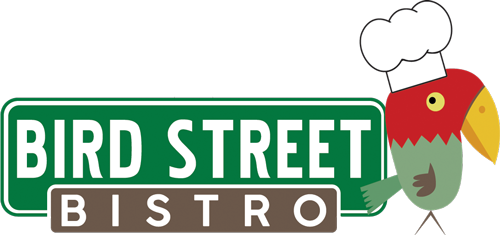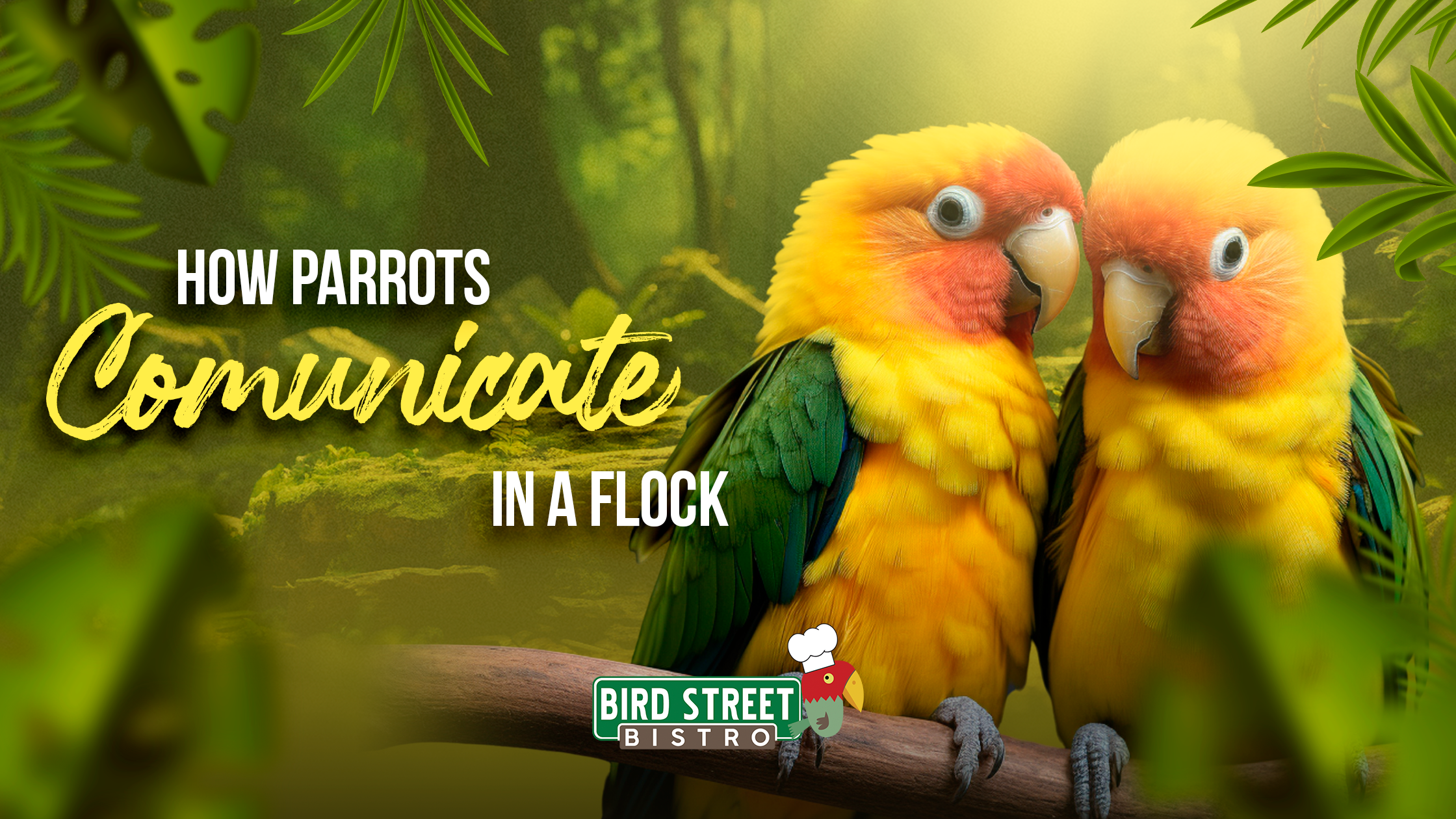How Parrots Communicate in a Flock
What is a Flock?
Just as us humans prefer to live and cooperate with other people, parrots also benefit from living in cooperative groups and with other birds. A group of parrots is called a flock and belonging to one is an essential part of a parrot’s life.
Belonging to a flock brings security and safety, provides a much better chance at survival and allows the bird to benefit socially from interacting with others.

You’ve probably heard of the expression “safety in numbers.” This is definitely true for parrots due to the fact that they are prey animals. Prey animals are hunted and eaten by other animals. It is much safer for a parrot to be in a group with others if a predator is nearby. Parrots in a flock will forage, eat, rest and play together among other things.
There are even flock members that take on looking out for danger while day to day activities are carried out.
In addition to the increased likelihood that they will survive dangers, parrots also benefit from belonging to a flock for social reasons. Parrots are intelligent creatures that have specific social needs. In order to get those needs met, they have to be able to “speak” with one another somehow. They might not use words in the same way that humans do, but they are constantly communicating and have their own complex ways of doing so. Let's take a look at some of the ways that parrots are thought to communicate with one another.
Vocalization
Being able to communicate with others will make it much more likely for a bird to belong to and get what they need from others in the flock. Parrots use sound as one of the main ways of doing so.
Researcher Dr. Tim Wright with New Mexico State University concluded that it seems to be extremely important to parrots that they can sound like the other birds in their flock. Dr. Tim Wright and his colleagues are currently testing the idea that “flock-specific calls act as a password and learning these calls allows immigrants to gain the benefits of flock membership.” Sounding like the others means that parrots are more likely to belong to that group.
This is to think of human speech accents. When people come together from different parts of a country, they might pick up on each other’s accents and start to sound like one another when speaking. This can also happen with new words and phrases from different cultures.
Like humans, parrots might also start to copy and use each other’s sounds and integrate them into the shared flock language.
To a person that observes a parrot, the way they vocalize may seem simple. But the sounds that they make often have specific meanings. Those meanings can change depending on how the sounds are used and even the volume or tone in which they are carried out. Parrots in a flock vocalize to communicate many things to one another. Here are just a few examples.
Body Language
In addition to vocalizing, parrots also use their bodies and movements to communicate, this is known as Avian Body Language. ABL is a very important part of how parrots communicate with one another within a flock. They will use body language to greet one another, communicate possible danger and show affection among other things. It might be easy for a human to mistake a parrot’s body language for something completely different than what they are trying to communicate. But for other birds in a flock, body language is understood and used as an important way to communicate with one another.
Here are just a few examples of how parrots might use their bodies and movements to communicate with each other. Body language can vary depending on the species of a parrot, so these are just some general guidelines:
Greetings

Some parrots use certain body movements and interactions as a way to “greet” one another. One example is that of the African Grey Parrot. They will lock or tap their beaks in a certain way when coming upon each other as a way of greeting one another. Different species may have different ways of doing so.
Alertness and Danger

Because parrots are prey animals, it is important that they remain alert when carrying out day-to-day activities such as foraging and bathing. Having multiple birds in a flock means that chances are better that possible predators will be spotted before they can strike. A parrot that is sleek, standing tall and ready to vocalize possible danger is a good sign for others in that flock that they need to be alert. Birds need to be ready to take flight if danger is spotted, and this stance helps them to act quickly if they need to.
Wellbeing and comfort

Parrots may stand with a more relaxed posture with their feathers ruffled or fluffed out with one foot tucked into their feathers when they are relaxed. This can also be accompanied by beak grinding and soft chattering by some species of parrot. Budgies will often sit fluffed out and maintain steady chattering and vocalizations when feeling content. Seeing others in a relaxed stance is a good indication to other birds that it is a good time to rest and that there is no apparent danger present.

Preening is another indication that a parrot is feeling safe and relaxed. Preening is often done as a group activity within a flock at certain times of the day.
Play and affection
Part of being an intelligent, social animal means that parrots need adequate social interaction. Although most regular, physical affection is mainly seen in bonded pairs, flockmates may preen one another and engage in playful interactions. These interactions are initiated by vocalizing and body language. For example, a bird might come up to a flock mate and lower their head or tilt it sideways to request that they be preened. A bonded pair or a mother bird may also start to bob their heads up and down rapidly to initiate feeding the other.

Displeasure and aggression
Sometimes a parrot may want some space or need to communicate disapproval or displeasure with a flockmate. These emotions will also be communicated using sound and body language. They might try to make themselves appear larger by standing tall or opening their wings. They might also jerk their head back and forth or fan out their tail feathers.

How can learning about avian body language help you become a better parrot owner?
In addition to providing a proper diet and a safe environment, understanding how parrots communicate is an important part of helping our birds to stay healthy and happy. Perhaps one of the greatest frustrations for captive parrots might be that humans may not understand some of the ways that they communicate using sound and body language. This lack of understanding may lead to less-desired behaviors such as biting due to our birds trying to use any means that they can in order to make us understand. Those less desired behaviors may occur once the bird’s more subtle attempts at communicating with us have failed.
Even less-desired behaviors such as biting serve a purpose. Just because a bird may nip at us doesn’t mean that the communication has failed completely. It just means that there is room to explore and learn about why the bird has chosen to communicate with us in this way. By learning about how parrots use their own language with one another and using healthy incentives during training, we can learn how to better interpret the meaning behind our parrot’s attempts to communicate with us and put it to good use in their care.
- Choosing a selection results in a full page refresh.
- Press the space key then arrow keys to make a selection.


